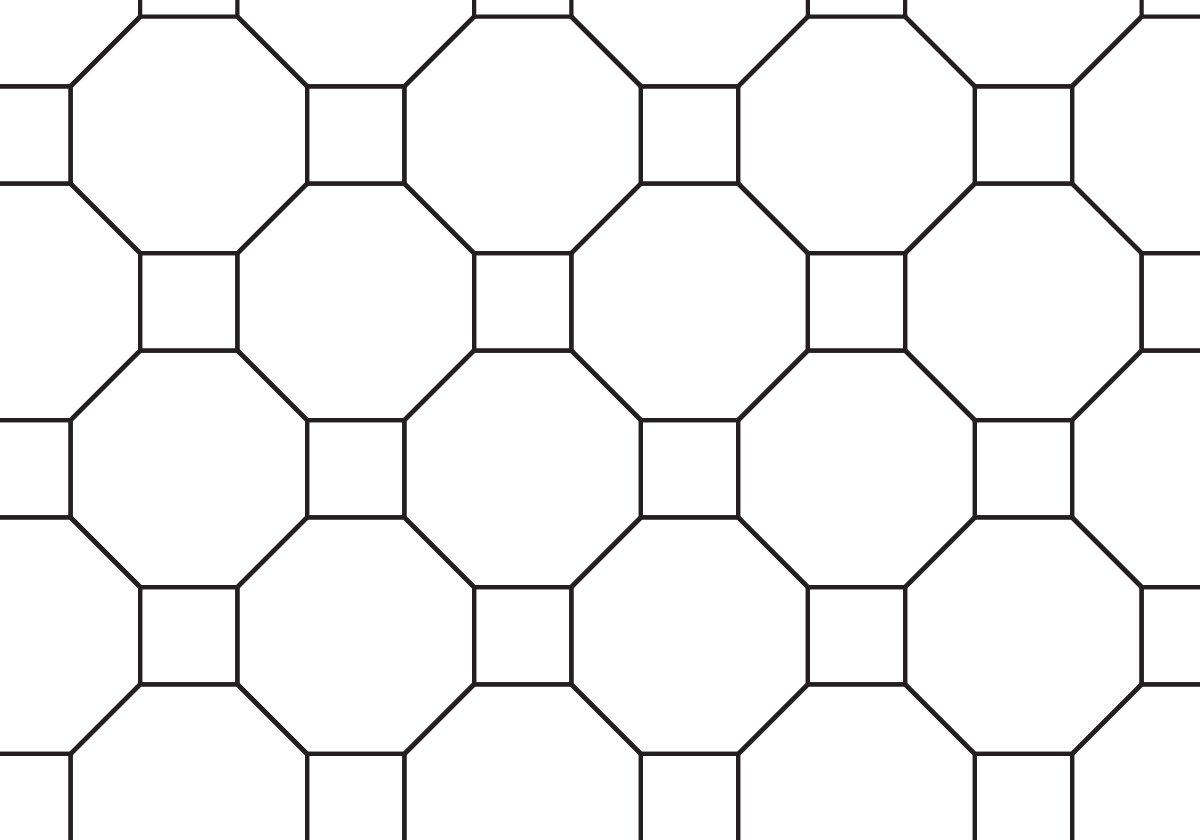Lesson 17
Rotate and Tessellate
Lesson Narrative
In this unit, students have learned how to name different types of rigid motions of the plane and have studied how to move different figures (lines, line segments, polygons, and more complex shapes). They have also used rigid motions to define what it means for figures to be congruent and have used rigid motions to investigate the sum of the angles in a triangle. In this lesson, students use the language of transformations to produce, describe, and investigate patterns in the plane. This is a direct extension of earlier work with triangles
- three triangles were arranged in the plane to show that the sum of the angles in a triangle is 180 degrees
- four copies of a triangle were arranged in a large square, cutting out a smaller square in the middle
Here the focus is more creative. Students will examine and create different patterns of shapes, including tessellations (patterns that fill the entire plane), and complex designs that exhibit rotational symmetry (that is, the design is congruent to itself by several rotations). Depending on the time available, students might work on both activities or choose one of the two.
As with many activities in this lesson, MP7 is central as students use the structure of a given set of polygons to produce a tessellation. The side lengths and angles of the polygons are constraints and through experimenting and abstract reasoning students discover a repeating pattern (MP2).
Learning Goals
Teacher Facing
- Create tessellations and designs with rotational symmetry using rigid transformations.
- Explain (orally and in writing) the rigid transformations needed to move a tessellation or design with rotational symmetry onto itself.
Student Facing
Let's make complex patterns using transformations.
Required Materials
Required Preparation
Print the Deducing Angle Measures blackline master. Prepare 1 copy for every 2 students. Cut the copies in half, so that there are enough copies for each student to receive a half-sheet. If possible, make these copies on cardstock so that students will have an easier time tracing shapes after they cut them out. If available, pattern blocks also work well for this.
Students may benefit from using graph paper and isometric graph paper, but these materials are optional.
Learning Targets
Student Facing
- I can repeatedly use rigid transformations to make interesting repeating patterns of figures.
- I can use properties of angle sums to reason about how figures will fit together.
Glossary Entries
-
tessellation
A tessellation is a repeating pattern of one or more shapes. The sides of the shapes fit together perfectly and do not overlap. The pattern goes on forever in all directions.
This diagram shows part of a tessellation.

Print Formatted Materials
For access, consult one of our IM Certified Partners.
Additional Resources
| Google Slides | For access, consult one of our IM Certified Partners. |
|
| PowerPoint Slides | For access, consult one of our IM Certified Partners. |